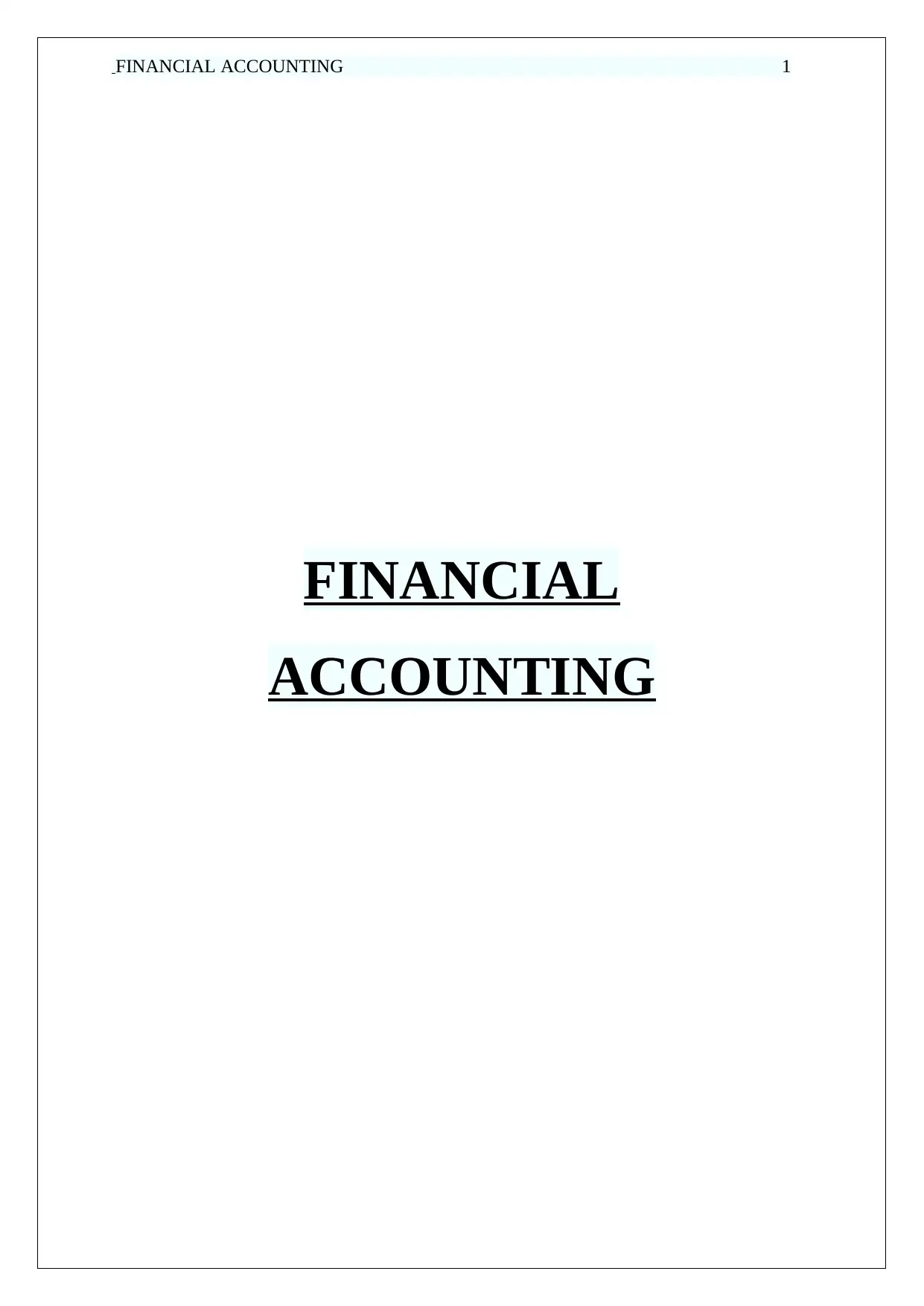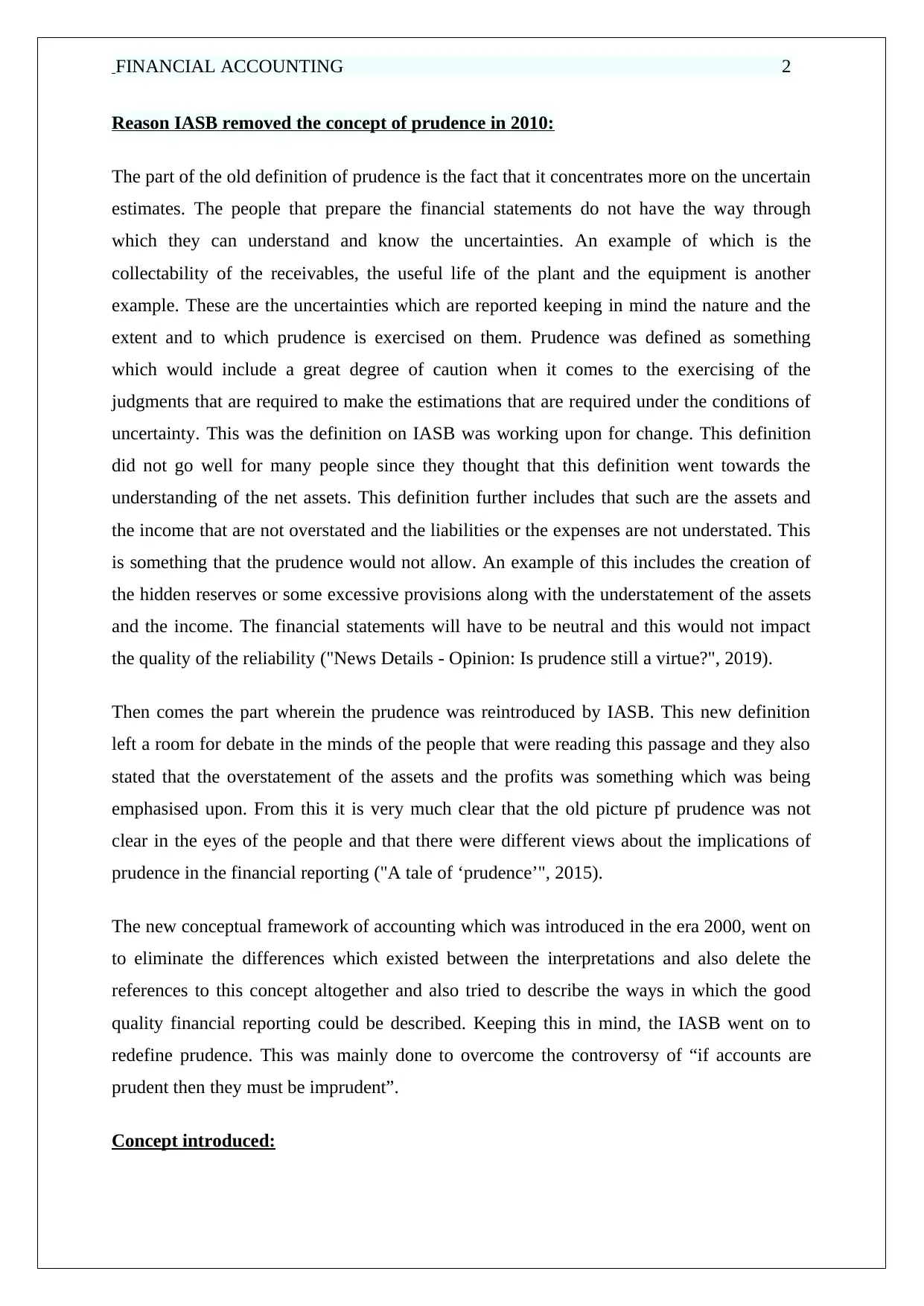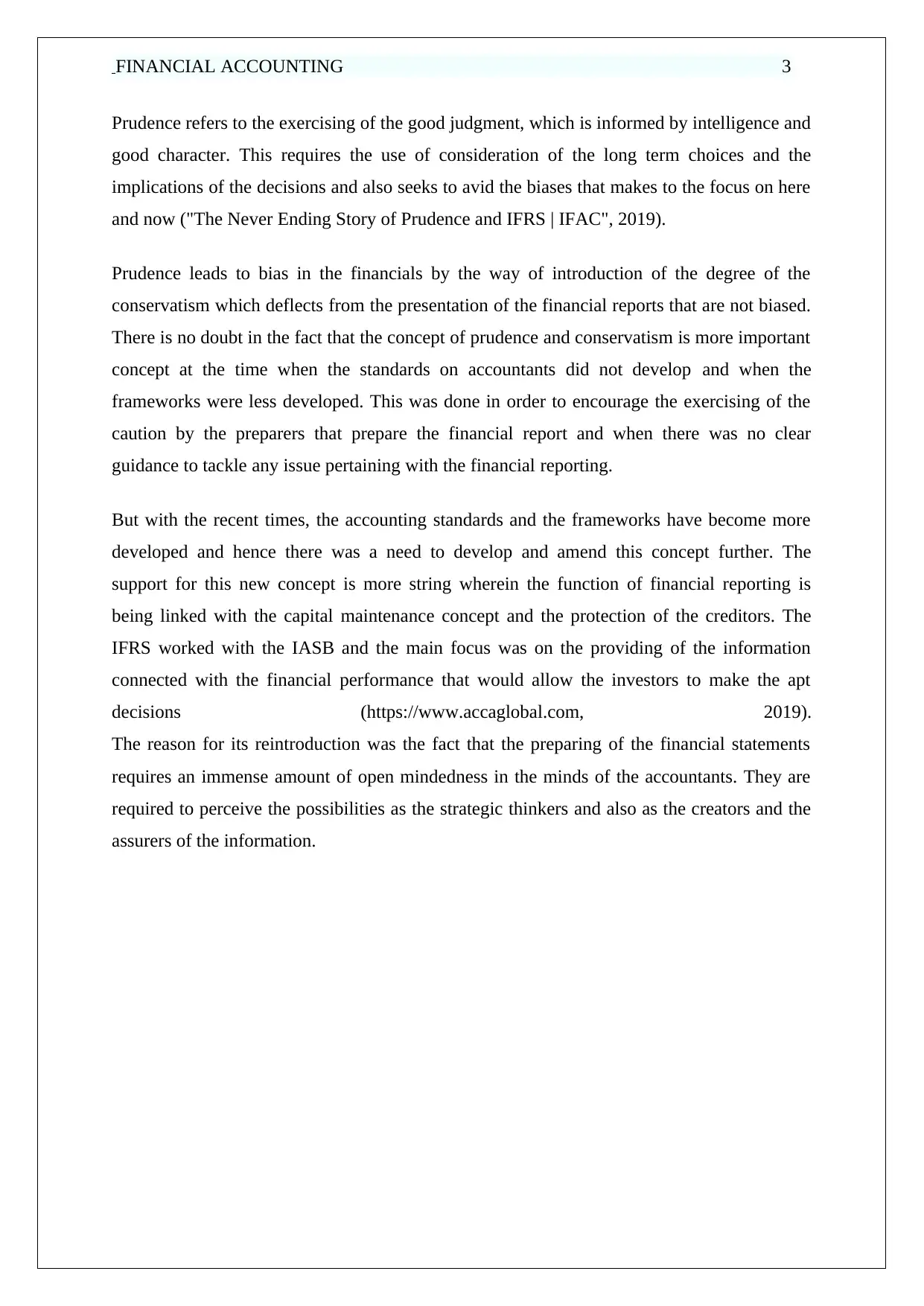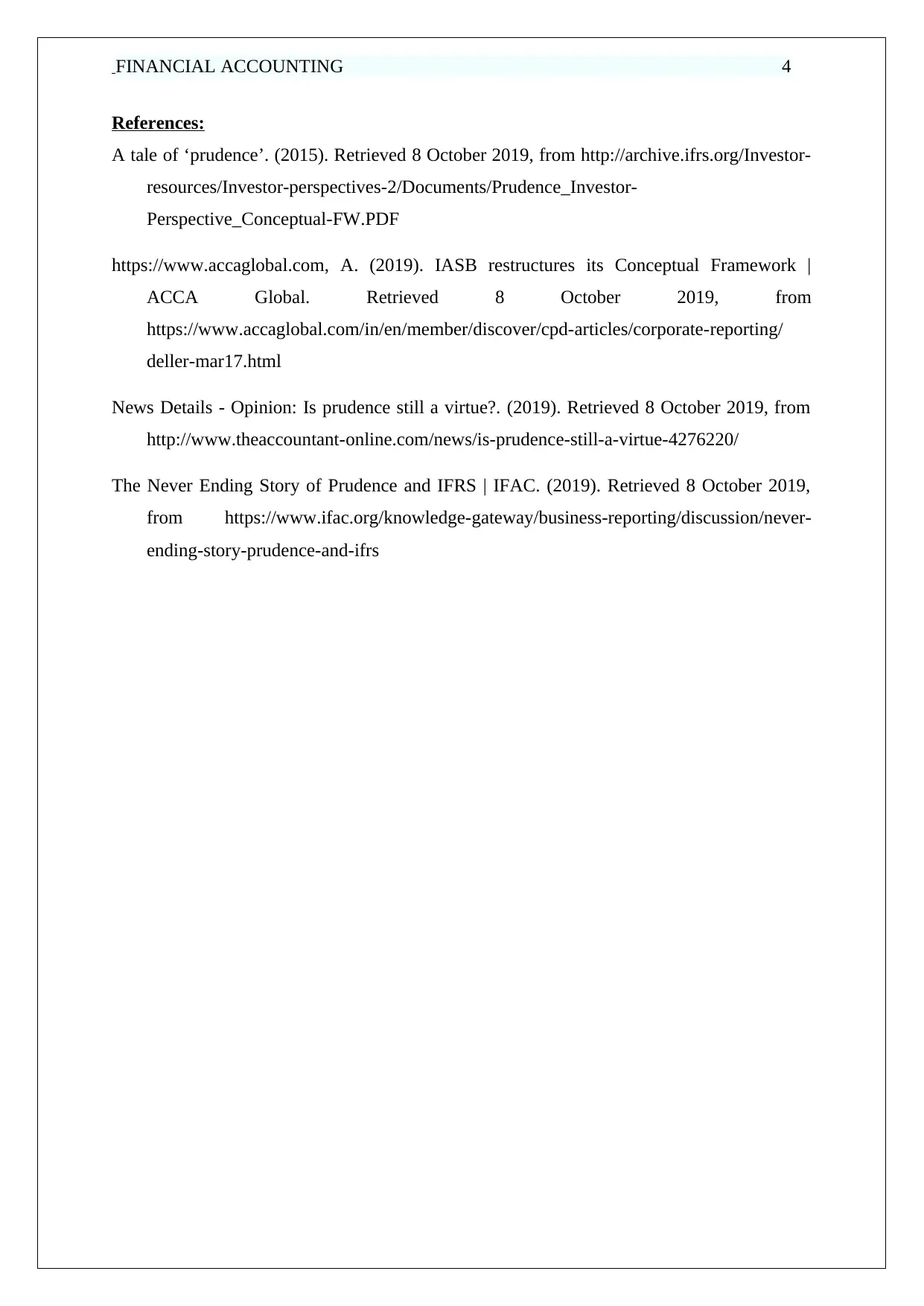Financial Accounting Report: IASB's Conceptual Framework and Prudence
VerifiedAdded on 2022/09/27
|4
|894
|25
Report
AI Summary
This report analyzes the evolution of the prudence concept within the IASB's conceptual framework for financial reporting. It begins by explaining the initial removal of prudence in 2010, focusing on the uncertainties in financial estimates and the potential for biased reporting, such as hidden reserves. The reintroduction of prudence is then discussed, highlighting the debate surrounding its interpretation and its role in influencing the quality of financial statements. The report further explores the shift towards a more developed accounting framework and the alignment of prudence with capital maintenance and investor decision-making. It references key documents and publications, including the conceptual framework and articles from ACCA Global and IFAC, to provide a comprehensive overview of the IASB's perspective on prudence and its significance in ensuring the reliability and neutrality of financial information. The report concludes by emphasizing the importance of open-mindedness and strategic thinking among accountants in preparing financial statements.
1 out of 4











![[object Object]](/_next/static/media/star-bottom.7253800d.svg)